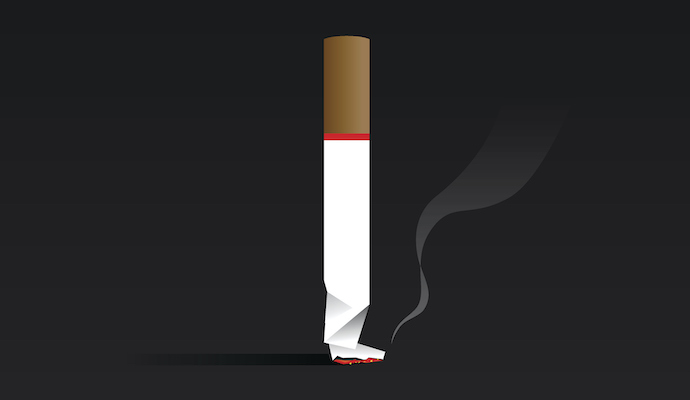Tobacco Surcharge Hinders Coverage Access for Low-Income Seniors
If the tobacco surcharge was based on ACA enrollee premiums after subsidies, the impact might better protect tobacco users financially while still incentivizing tobacco cessation.

Source: Getty Images
- Smoking can lead to higher premiums, a recent study on the tobacco surcharge and tobacco users’ Affordable Care Act marketplace premiums revealed.
According to the Centers for Disease Control and Prevention (CDC), smoking is the top cause of preventable deaths in the US, costing the country more than 480,000 lives or one in five deaths. Over eight percent of that tally are individuals who die from secondhand smoke.
Smoking leads to or worsens conditions that can be costly to treat, including some of the top ten most expensive chronic conditions.
As a result, payers can legally raise a tobacco user’s premium up to 1.5 times higher than a non-using beneficiary’s premium, in the hopes of disincentivizing smoking. This is called a tobacco surcharge.
“Despite being charged higher premiums in most states, tobacco users receive premium subsidies that are identical to what nonusers receive—that is, they do not receive any additional subsidies to pay for any portion of their tobacco surcharge,” the researchers found.
“Thus, tobacco users do not receive the same financial protection from increasing premiums as nonusers because tobacco surcharges increase with premiums but are not offset by subsidies.”
Researchers used public files on the health insurance marketplace from CMS for 2015 to 2019.
The results showed that tobacco users not only paid more in premiums than non-users on the Affordable Care Act marketplace, but that their premiums continued to rise year after year.
The group that saw the biggest price increase was middle-aged tobacco users. Forty-five year old tobacco users on the lowest cost marketplace plan saw a 125 percent increase in premiums between 2015 and 2019. The 27-year-old tobacco user’s premium for that plan rose by 113 percent from 2015 to 2019 and 64-year-olds saw a 95 percent rise.
While the oldest bracket saw the lowest percent increase, they had the highest median premium overall, closing out 2019 with a median monthly premium of $156, compared to $72 and $34 for 45- and 27-year-olds respectively.
“Although tobacco surcharges do not exceed 50 percent of unsubsidized premiums as a matter of regulation, after subsidies are factored in, tobacco users often paid an excessive after subsidy tobacco surcharge for both benchmark plans and lowest-cost plans, which we defined as an after-subsidy tobacco surcharge that exceeded 50 percent,” the researchers explained.
With each passing year, tobacco users had to spend a higher portion of their income on their health plan. Tobacco users ended up having less access to affordable health plans than their nonuser counterparts and this lack of access was tied to increasing age. This makes it particularly challenging for older, low-income tobacco users to access affordable coverage.
These findings concerned the researchers, who noted that older, low-income populations are most likely to be afflicted by chronic diseases.
The researchers recommended that policymakers adjust the regulations so that the surcharge may not exceed 50 percent of the subsidized premium, not the pre-subsidy premium.
The American Lung Association, whose mission includes promoting a tobacco-free culture, has historically agreed with the conclusions this study reached.
The organization’s materials have pointed out certain problems with the tobacco surcharge, including that penalties do not traditionally incentivize smokers to quit smoking but rather to quit insurance and that other methods have proven more effective, such as higher tobacco taxes.
Some states have already As of August 2019, seven states disallowed tobacco surcharges in the individual health insurance market and eight did not permit them in the small group health insurance market, the American Lung Association noted.
Some private payers have also invested in tobacco substance abuse care and preventive measures, instead of pushing penalties.
Coronavirus has also provided a major incentive to reform or bolster tobacco substance abuse care strategies, since tobacco usage weakens the lungs and leaves users vulnerable to severe complications.
